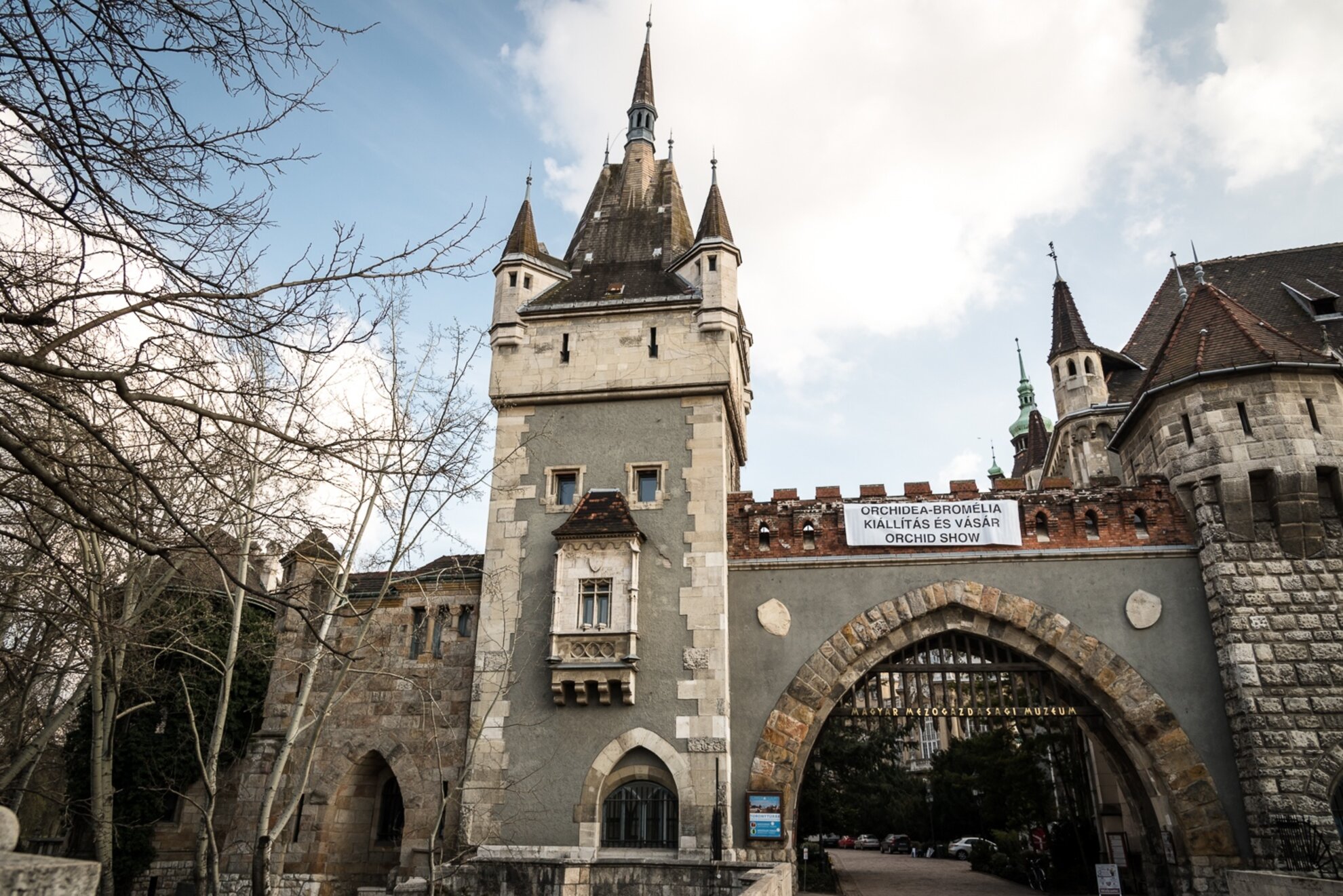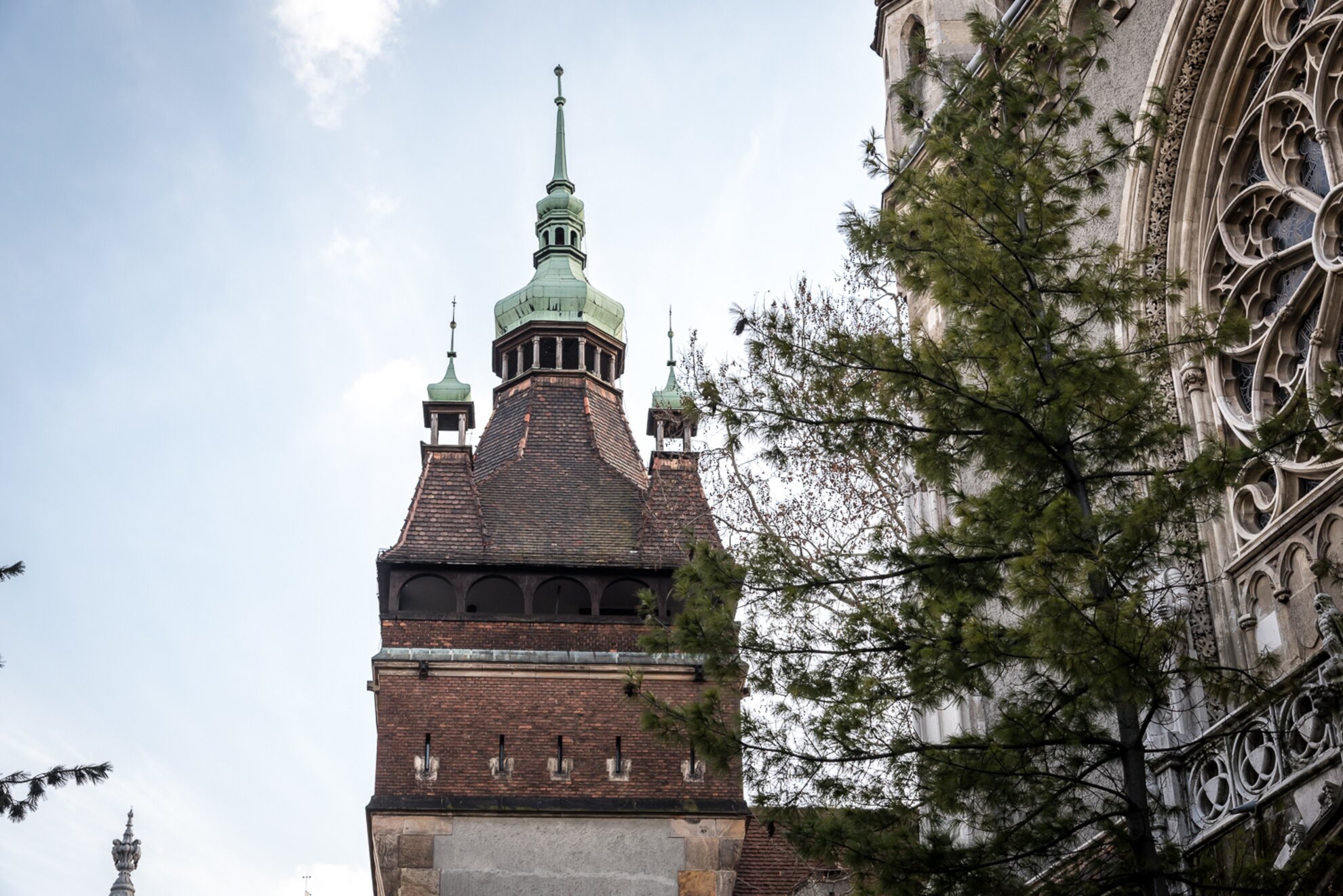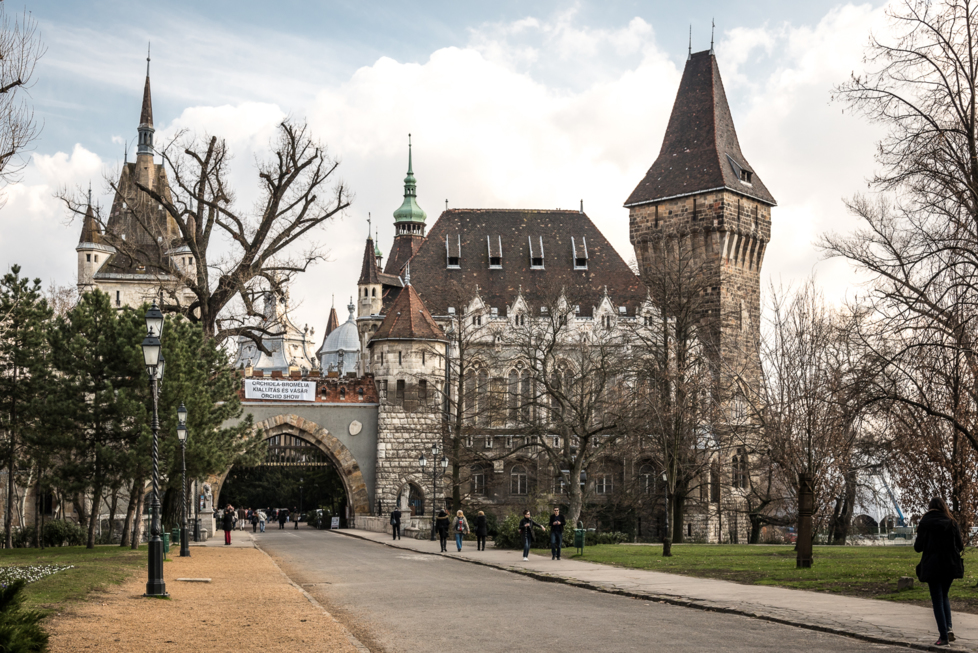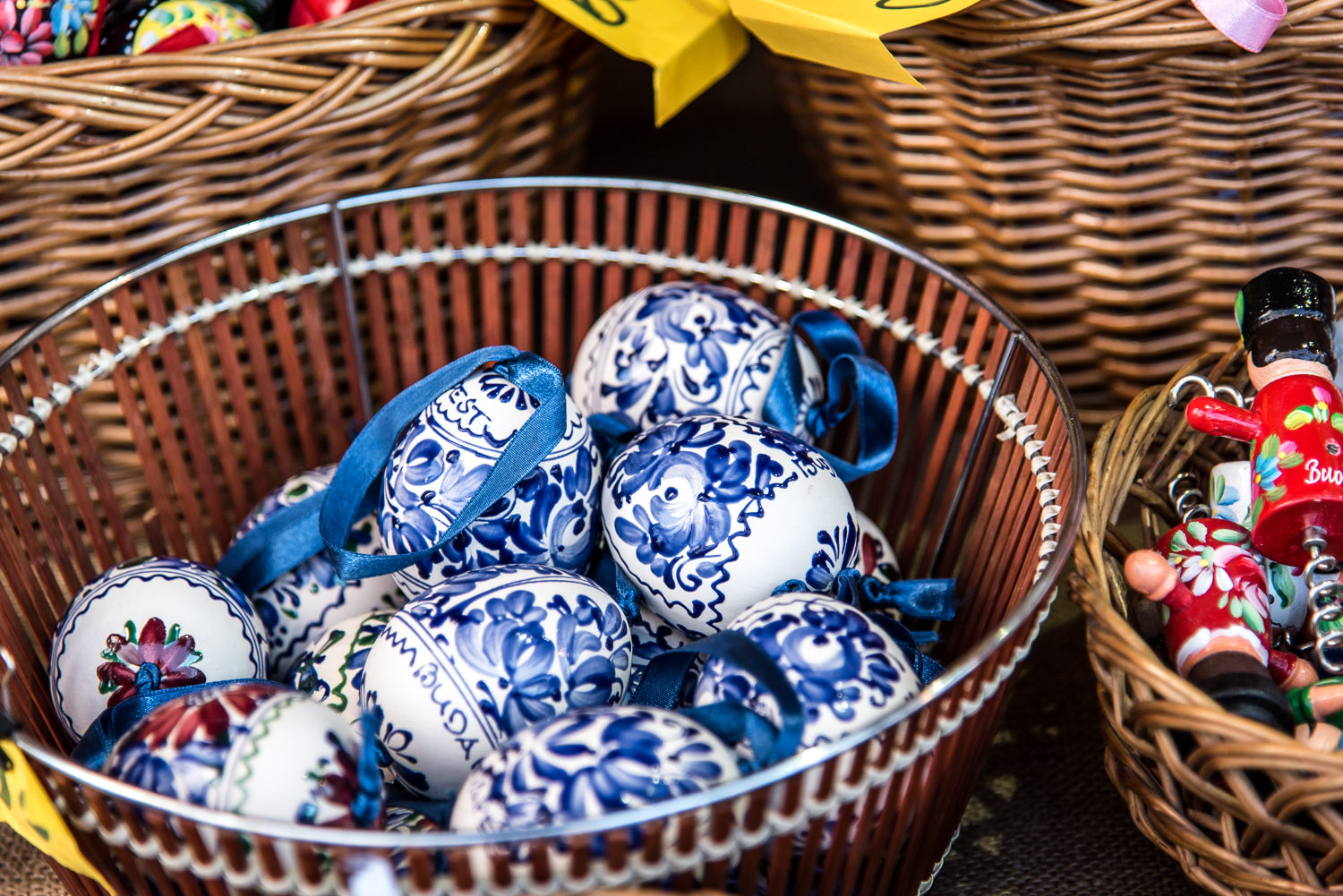Approaching Vajdahunyad Castle’s magical setting from the nearby Széchenyi Bath is like hopping into our favorite fable, and we almost envision an imperial scene coming alive in front of our eyes, starring a dignified sovereign sitting on a velvet throne alongside elegantly attired princesses wearing cerulean dresses with matching bright blue ribbons in their hair. But as we pass under the iron gateway mounted on the arched parapet, we see no castle guards blocking our admission to the royal grounds, nor do we find a regally attired crowd – in fact Vajdahunyad Castle never functioned as a monarchial hub during its history, but was instead originally constructed at a brisk pace to be a temporary timber structure for Hungary’s 1896 millennial celebrations – a large-scale festivity that commemorated the 1,000th anniversary of the Magyars’ arrival in Hungary. Vajdahunyad Castle was slated for demolition soon after the festivities concluded, but the palace ended up being so popular that the monument was reconstructed with hard stone to become an enduring establishment, and by 1907 the show chateau was the permanent home of the Museum of Hungarian Agriculture; today it still serves this purpose.

Visitors embarking on the upward hike into two of the recently opened towers can learn about all this history – along with many other lesser-known tidbits related to the imposing edifice – while a short Hungarian-and-English-language guided tour kicks off in the Apostles’ Tower (“Apostolok Tornya” in English) every hour from Tuesday to Sunday during the museum’s opening hours.
With the starting point at the cash counter located behind the exhibition hall’s main entrance, sightseers first traverse a lengthy corridor leading to a stairway connecting the ground floor with the museum’s hunting-themed displays, and then begin climbing the 150 steps to the spire’s peak. As we ascend the skyward path, we witness that the staircase’s whitewashed simplicity is broken up by eccentric animal preparations and frescoes depicting boisterous hunting scenes, while we pass sizeable wooden doors that pique our interest; our guide explains that they hide a collection of concealed hunting trophies – such obscure details certainly make us believe that we are on a mysterious expedition.

Once we reach the peak point of the tour, standing 30 meters above the ground, we immediately feel the fresh breeze on our skin as we step outside to immerse in an all-encompassing panorama over Budapest’s entire skyline. From here we can see the silhouettes of the Buda Castle and Gellért Hill with the Citadel fortress on top; we can catch a glimpse of St. Stephen’s Basilica’s colossal dome and the Parliament’s pointy architecture downtown, while we can gaze at the nearby Széchenyi Bath from a bird’s-eye view – in clear conditions the visibility can stretch as far as the Gödöllő Hills to the northeast.
While we are absorbing this astounding scenery, our guide reveals the history of Vajdahunyad Castle, and draws our attention to the amalgam of architectural styles that we can observe throughout the building: an eclectic mix of Romanesque, Gothic, Renaissance, and Baroque styles are represented here, and the reason is that the distinct sections of the palace were inspired by diverse edifices from throughout Hungary’s history. Thus the Apostles’ Tower was modeled according to the identical steeple of Romania’s Segesvár Castle, in a Gothic style. The tower tour is also a great opportunity to examine the stone-carved statues mounted on the facade of the museum’s Baroque wing: from here we can observe the intricate details of the allegorical figures, each of them depicting distinct agricultural sectors, or we can absorb an aerial view of the medieval-style cloister, all details that are hard to see from down below.After descending the steeple in a high-spirited state of mind, we are advised to continue our heavenly odyssey in the Gate Tower (“Kapu Torony” in English); here anyone can enter without a guide throughout the week. But before heading up the spire’s 65 stairs, we take some time to get a closer look at the archive images that demonstrate the castle’s condition across different eras, including when it was severely damaged during World War II. Besides the intriguing historic documentation, we learn that the small wooden door on the tower’s left wall was an undiscovered alcove for many decades, before this out-of-sight entrance was exposed after a massive cupboard was moved during the building's 2015 renovations. Inside, the museum team stumbled upon a true hidden treasure: the original blueprints prepared by the castle’s architect Ignác Alpár dating back to the early 1900s, when the monument was reconstructed for posterity.

After scaling the second steeple, we immediately lay our eyes on another collection of archive images mounted on the walls side by side, and once we step out of this tiny gallery we find ourselves on a wooden ramp outside, where we enjoy views of a lower altitude compared with the previous vantage point. From here, we can admire the lengthy lane leading to the castle’s gateway – surrounded by a water-filled moat – as it blends with City Park’s sylvan settings, and we can also marvel at the castle’s intricately crafted rose window designed by stained-glass genius Miksa Róth, an artistic masterpiece that adds sparkle to the already intriguing scenes around this edifying edifice.Those who want to delve deeper into the museum’s rich collection can get lost for hours amid the diverse halls of intriguing relics, representing fishing, hunting, forestry, environmental protection, and viniculture. An English-language audio guide is available at the entrance, while the information boards – showcased near each display – present commentary for English-speaking visitors.ADMISSION FEES Gate Tower: 300 forints Apostles’ Tower: 600 forints Combined ticket to Apostles’ Tower and Gate Tower: 700 forints Combined ticket to both towers and the Museum of Hungarian Agriculture: 1,700 forints




